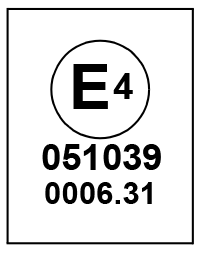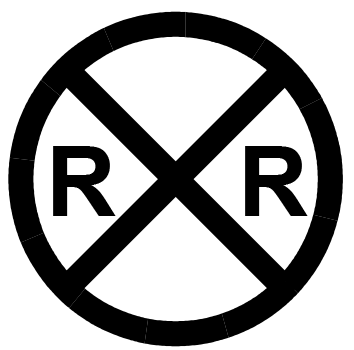
Content Source: 2020 Indy 120 Owner’s Manual (9929777 R01) > Adult Section Chapter
| IMPORTANT |
|
The Owner's Manual for this vehicle contains warnings, instructions and other information you must read and fully understand before safely riding or performing maintenance on this vehicle.Always follow the warnings and instructions in Owner's Manual. Click the CONTENTS link above for the Table Of Contents, or download a full PDF of the Owner Manual in the Owner Support area of Polaris.com |
| NOTICE |
| Damage to the engine may occur if the intake silencer or filter are removed. |
| During warm-up and operation, stand clear of the rotating track. Entanglement and serious injury or death may result. Use just enough throttle to rotate the track and warm up the engine. |
| The drive chain guard is designed to protect the operator from metal parts in the event of a drive chain failure. Although the chance of failure is extremely remote, do not defeat the purpose of the guard by removing it. It is provided for the safety of the child. |
| Hot components can cause serious burns to skin. Do not touch engine and exhaust parts after the engine has been running. |
Approved helmets in the USA and Canada bear a U.S. Department of Transportation (DOT) label.

Approved helmets in Europe, Asia and Oceania bear the ECE 22.05 label. The ECE mark consists of a circle surrounding the letter E, followed by the distinguishing number of the country which has granted approval. The approval number and serial number will also be displayed on the label.

| This snowmobile is propelled by a revolving track, which must be partially exposed for proper operation. Serious injuries may be caused by operator carelessness, resulting in hands, feet, hair or clothing becoming entangled in the track. Teach the child to respect this machine and all moving parts. Teach the child that being properly seated is the safest way to stay clear of the track. |
|
Never hold the snowmobile up or stand behind it while
warming up the track. A loose track or flying debris could cause serious
personal injury or
death.
|
| The snowmobile engine compartment contains moving parts. Shields and guards have been provided for safety, but it is still possible to carelessly get your hands or fingers into a moving chain or a rotating shaft. For this reason never attempt adjustments with the engine running. Serious personal injuries can result. Instead, stop the engine, raise the hood, make the adjustment, secure shields and guards, secure the hood, and then re-start the engine to check its operation. The same is true of track alignment. If the track must be re-aligned, it is recommended that this service be performed by your dealer. |
| IMPORTANT |
| The headlight and taillight are intended only to increase the visibility of the snowmobile during daylight operation. Do not operate this snowmobile in the dark. |
|
Teach the operator that the sound of the engine will make it difficult to hear the sound of approaching vehicles. Do not allow a child to operate the snowmobile on or near roads and railroad tracks.
Teach operators what it means to drive defensively. Never tailgate and always allow ample stopping distances. |
 |
| Ice and snow build-up may interfere with the steering of your snowmobile, resulting in serious injury or death. Keep the underhood area free of snow and ice. |
| Children must never ride on a frozen body of water. Make sure all operators understand that severe injury or death can result if the snowmobile and its rider fall through the ice. |
| Serious injury or death can result if the snowmobile rolls or slides downhill. If the snowmobile stops while the operator is driving on a hill, the operator should dismount on the uphill side of the vehicle. Never dismount or stand on the downhill side of a snowmobile. |
| When driving on long downhill stretches, pump the brakes. Riding the brakes may cause the brake system to overheat, which may result in brake failure. Excessive or repetitive use of the brakes for high speed stops will also cause an overheated brake system. This condition may lead to a sudden loss of brakes and/or fire and may result in serious injury or death. |
| Wind Speed in MPH | Actual Thermometer Reading (°F) | |||||||||||||||||
| 40 | 35 | 30 | 25 | 20 | 15 | 10 | 5 | 0 | -5 | -10 | -15 | -20 | -25 | -30 | -35 | -40 | -45 | |
| Equivalent Temperature (°F) | ||||||||||||||||||
| Calm | 40 | 35 | 30 | 25 | 20 | 15 | 10 | 5 | 0 | -5 | -10 | -15 | -20 | -25 | -30 | -35 | -40 | -45 |
| 5 | 36 | 31 | 25 | 19 | 13 | 7 | 1 | -5 | -11 | -16 | -22 | -28 | -34 | -40 | -46 | -52 | -57 | -63 |
| 10 | 34 | 27 | 21 | 15 | 9 | 3 | -4 | -10 | -16 | -22 | -28 | -35 | -41 | -47 | -53 | -59 | -66 | -72 |
| 15 | 32 | 25 | 19 | 13 | 6 | 0 | -7 | -13 | -19 | -26 | -32 | -39 | -45 | -51 | -58 | -64 | -71 | -77 |
| 20 | 30 | 24 | 17 | 11 | 4 | -2 | -9 | -15 | -22 | -29 | -35 | -42 | -48 | -55 | -61 | -68 | -74 | -81 |
| 25 | 29 | 23 | 16 | 9 | 3 | -4 | -11 | -17 | -24 | -31 | -37 | -44 | -51 | -58 | -64 | -71 | -78 | -84 |
| 30 | 28 | 22 | 15 | 8 | 1 | -5 | -12 | -19 | -26 | -33 | -39 | -46 | -53 | -60 | -67 | -73 | -80 | -87 |
| 35 | 28 | 21 | 14 | 7 | 0 | -7 | -14 | -21 | -27 | -34 | -41 | -48 | -55 | -62 | -69 | -76 | -82 | -89 |
| 40 | 27 | 20 | 13 | 6 | -1 | -8 | -15 | -22 | -29 | -36 | -43 | -50 | -57 | -64 | -71 | -78 | -84 | -91 |
| 45 | 26 | 19 | 12 | 5 | -2 | -9 | -16 | -23 | -30 | -37 | -44 | -51 | -58 | -65 | -72 | -79 | -86 | -93 |
| 50 | 26 | 19 | 12 | 4 | -3 | -10 | -17 | -24 | -31 | -38 | -45 | -52 | -60 | -67 | -74 | -81 | -88 | -95 |
| 55 | 25 | 18 | 11 | 4 | -3 | -11 | -18 | -25 | -32 | -39 | -46 | -54 | -61 | -68 | -75 | -82 | -89 | -97 |
| 60 | 25 | 17 | 10 | 3 | -4 | -11 | -19 | -26 | -33 | -40 | -48 | -55 | -62 | -69 | -76 | -84 | -91 | -98 |
| Frostbite in >> | 30 min. | 10 min. | 5 min. | |||||||||||||||
| Wind Speed in Km/h | Actual Thermometer Reading (°C) | |||||||||||||||||
| 5 | 2 | -1 | -4 | -7 | -10 | -13 | -16 | -19 | -22 | -25 | -28 | -31 | -34 | -37 | -40 | -43 | -46 | |
| Equivalent Temperature (°C) | ||||||||||||||||||
| Calm | 5 | 2 | -1 | -4 | -7 | -10 | -13 | -16 | -19 | -22 | -25 | -28 | -31 | -34 | -37 | -40 | -43 | -46 |
| 8 | 3 | 0 | -4 | -7 | -11 | -14 | -18 | -22 | -25 | -29 | -32 | -36 | -39 | -43 | -46 | -50 | -53 | -57 |
| 16 | 2 | -2 | -6 | -10 | -13 | -17 | -21 | -24 | -28 | -32 | -36 | -39 | -43 | -47 | -50 | -54 | -58 | -62 |
| 24 | 1 | -3 | -7 | -11 | -15 | -19 | -22 | -26 | -30 | -34 | -38 | -42 | -45 | -49 | -53 | -57 | -61 | -65 |
| 32 | 0 | -4 | -8 | -12 | -16 | -20 | -24 | -28 | -32 | -36 | -39 | -43 | -47 | -51 | -55 | -59 | -63 | -67 |
| 40 | -1 | -5 | -9 | -13 | -17 | -21 | -25 | -29 | -33 | -37 | -41 | -45 | -49 | -53 | -57 | -61 | -65 | -69 |
| 48 | -1 | -5 | -9 | -13 | -18 | -22 | -26 | -30 | -34 | -38 | -42 | -46 | -50 | -54 | -58 | -62 | -66 | -70 |
| 56 | -2 | -6 | -10 | -14 | -18 | -22 | -26 | -31 | -35 | -39 | -43 | -47 | -51 | -55 | -59 | -64 | -68 | -72 |
| 64 | -2 | -6 | -10 | -15 | -19 | -23 | -27 | -31 | -35 | -40 | -44 | -48 | -52 | -56 | -61 | -65 | -69 | -73 |
| 72 | -2 | -7 | -11 | -15 | -19 | -23 | -28 | -32 | -36 | -40 | -45 | -49 | -53 | -57 | -61 | -66 | -70 | -74 |
| 80 | -3 | -7 | -11 | -15 | -20 | -24 | -28 | -33 | -37 | -41 | -45 | -50 | -54 | -58 | -62 | -67 | -71 | -75 |
| 88 | -3 | -7 | -12 | -16 | -20 | -24 | -29 | -33 | -37 | -42 | -46 | -50 | -55 | -59 | -63 | -67 | -72 | -76 |
| 96 | -3 | -8 | -12 | -16 | -21 | -25 | -29 | -34 | -38 | -42 | -47 | -51 | -55 | -60 | -64 | -68 | -73 | -77 |
| Frostbite in >> | 30 min. | 10 min. | 5 min. | |||||||||||||||
© Copyright Polaris Industries Inc. All rights reserved.